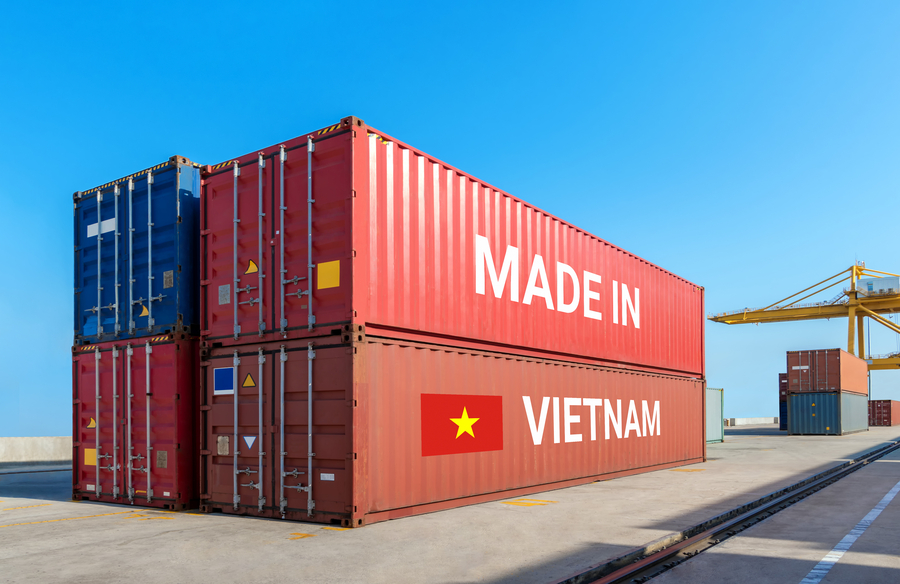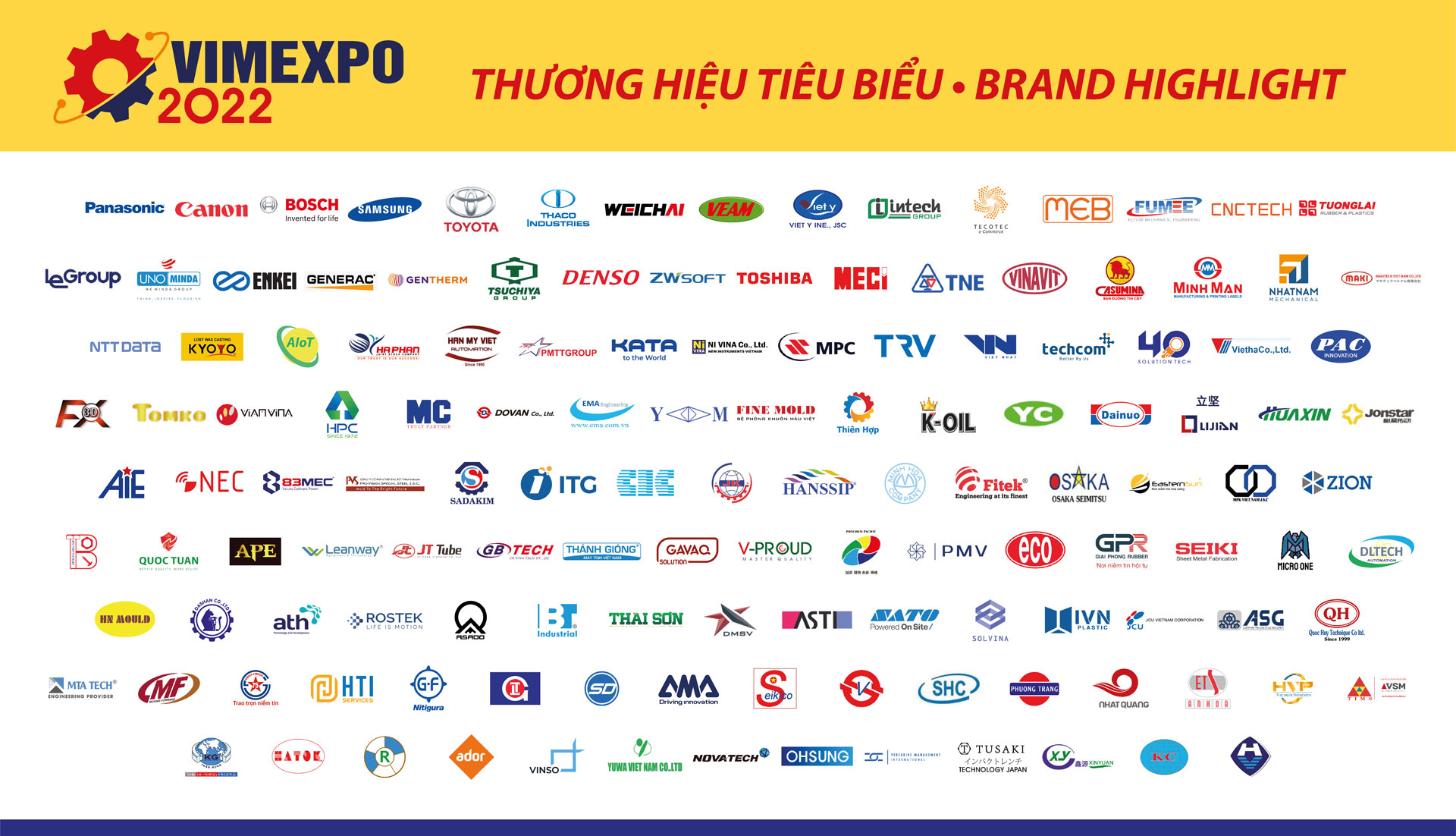- As Vietnam transforms into a global manufacturing hub, it has emerged as an effective relocation destination also known as the China plus one strategy.
- Major factors driving industry growth are the benefits from multilateral free trade agreements and competitive labor costs.
- Despite its development in recent years, the manufacturing sector in Vietnam could develop human resources and leverage its capabilities to enhance competitiveness.
As global businesses seek to diversify, increase resiliency and connectivity of their supply chains and decrease reliance on a single country, Vietnam has become a top destination for investment in manufacturing due to its strategic location and advantages in shipping, competitive labor, and production costs.
Compared to other Southeast Asian countries, Vietnam stands out with international airports seaports, and rail links facilitating production flow and transportation.
In 2020, the manufacturing and processing sector continued to take the lead in the country’s foreign direct investment (FDI), making up 58.2 percent of the total. With its contribution, Vietnam’s economy is forecast to regain momentum and reach GDP growth of 6 to 6.5 percent in 2022.
In 2020-2021, due to COVID-19, the manufacturing sector endured significant supply chain disruptions. Temporary business closures, transportation difficulties, and staff shortages all contributed to a reduction in manufacturing output in Vietnam.
Meanwhile, the pandemic hindered manufacturing industries due to an increase in input prices, raw material shortages, lack of shipping capacity, and transportation issues.
However, following the easing of lockdown restrictions, business activity in Vietnam has been busy again with consumer confidence gradually recovering.
According to a report by IHS Markit, Vietnam’s manufacturing purchasing managers’ index (PMI) increased to 52.2 in November from 52.1 in October, attributed largely to higher new orders and government incentives. A score of 50 or more means an expansion in manufacturing.
Key drivers of Vietnam’s manufacturing sector
The manufacturing industry is driven by several key factors. Firstly, Vietnam is touted as a low-cost manufacturer with competitive labor costs. On average, Vietnam’s labor costs are half as much as China’s labor costs at US$2.99 (VND 68.000) per hour compared to US$6.50 (VND 148.000) per hour respectively. This contributes to Vietnam’s increasing position as a more cost-effective alternative to its regional counterparts.
Secondly, Vietnam has a relatively large, well-educated labor force, making it an attractive hub for production. In addition, the government has provided various vocational education and training sessions to equip the workforce.
With the current labor shortage and lack of skilled workers in specific industries such as IT, the government has put additional strategies and programs in place.
For example, several incentives have been issued such as the recent approval of the vocational education and training strategy 202-2030 and the issuance of Decision 17 on vocational training support. This highlights Vietnam’s commitment to improving the efficiency of training and education for the labor market.
A plethora of free trade agreements (FTAs), such as the EU-Vietnam Free Trade Agreement (EVFTA), the UK-Vietnam Free Trade Agreement (UKVFTA), and the Comprehensive and Progressive Agreement for Trans-Pacific Partnership (CPTPP), also strengthens Vietnam’s competitiveness as a low-cost manufacturing export hub.
Such trade agreements allow Vietnam to take advantage of reduced tariffs, both within the ASEAN Economic Community (AEC) and with the EU and US to attract exporting companies to produce in Vietnam and export to partners outside ASEAN.
Additionally, Vietnam has benefitted from the fallout of the US-China trade war, as higher US tariffs on a wide range of Chinese exports have driven manufacturers to switch production away from China towards alternative manufacturing hubs such as Vietnam.
Vietnam in particular has grown to become an inexpensive and versatile destination for manufacturing outside of China, however, it still needs to develop to fully leverage its manufacturing capabilities.
Government incentives for manufacturing in Vietnam
The government recently issued Decree No. 57/2021/ND-CP (Decree 57), supporting industries related to supply of raw materials, spare parts, and components to manufacturing industries such as electronics and mechanical engineering industries, garment and textile, leather, and footwear industries, hi-tech industries, and the automotive industry.
The tax savings from the application of the Decree will provide financial support to enterprises in their business activities that have been impacted by the pandemic. It will also strengthen confidence in the government’s efforts to reform tax mechanisms and policies, thus promoting a more favorable business environment in Vietnam.
According to Resolution No.115/NQ-CP in 2020, the government set a target that by 2025 Vietnamese companies will be able to manufacture products in supporting industries that have a high level of competitiveness, satisfying 45 percent of the essential needs of domestic production and consumption.
Further Vietnam has issued several tax incentives and tax holidays for manufacturing projects in the form of corporate income tax (CIT), for large investment projects with capital of more than VND 6 trillion (US$264 million) as well as incentives in high-tech zones, certain industrial zones and difficult socio-economic areas.
In addition, incentives are also offered for the high-technology sector as well as textiles and garments, IT, automobiles assembly, and so on.
Sectors at the forefront of Vietnam’s manufacturing boom
Apparel, garment, textile, and footwear
Vietnam’s textile and garment industry has witnessed a strong development and plays an increasingly important role in the economic growth of the country, making Vietnam the fourth-largest garment exporter in the world market after China and the EU.
According to the Vietnam Textile and Apparel Association (VITAS), in the first nine months of 2021, the total export value of Vietnam’s textiles and garments was estimated at US$29 billion, up by 13.2 percent over the same period of 2020.
VITAS also predicts that in 2022, as production gradually returns to normal, the industry should expect to achieve an export value ranging from US$39 billion to US$42 billion.
Vietnam has grown to become the second-biggest supplier of footwear and apparel to the US after China. It is also one of Asia’s key manufacturing hubs and produces goods for some of the biggest Western brands in tech, garments, and sportswear.
For example, Nike has 200 manufacturing plants while Adidas has 76 factories in Vietnam, of which the latter constitutes Vietnam’s second rank in the global number of factories for Adidas. Statistically, both Nike and Adidas produce more of their core products in Vietnam than in China.
After being hit by COVID-19, the government has paid more attention to fastening the recovery of this sector. To restore production, the Ministry of Industry and Trade (MoIT) plans to remove bottlenecks and provide support to help factories resume operations and take advantage of orders for European and US markets.
Meanwhile, in response to the current trade bottlenecks at the China-Vietnam border due to China’s preventive measures, the MoIT is suggesting firms consider other transportation besides road transportation such as rail networks.
For example, they can look at maritime transportation and redirect trade routes to other provinces to ease congestion. MoIT will also facilitate the implementation of a development strategy for garment, textile and footwear by 2030, with a vision to 2035, and the building of a program on sustainable development of the sectors until 2030.
Compared to many competitors, Vietnam’s textile and garment industry has certain advantages in terms of products’ quality, techniques, the ability to meet strict requirements on labor, and tariff preferences due to various FTAs. Overall, the sector expects a longer but steadier recovery with many opportunities for foreign investors in the medium term.
Electronic and electrical appliances
Despite strong development in recent years, Vietnam’s electronics industry still lags behind the global market, by not having a breakthrough or achievement to compete in the technology field. However, the government is keen to change this by attracting hi-tech industries to further develop and promote the industry.
Within 2020-2021, development was mainly reflected in the attraction of large investments from multinational corporations, especially those from South Korea and Japan. In the first eight months of 2021, FDI projects in electronics manufacturing accounted for 95 percent of the total export turnover of the industry, with 33 electrical projects licensed and total registered capital of over US$1.7 billion.
Foxconn, a key supplier for Apple, has so far invested in Vietnam US$1.5 billion in 2020 and raised its investment by US$700 million while recruiting 10,000 more local workers in 2021.
However, Vietnam currently only assembles simple parts and does simple production processing. When it comes to the production of components or specialized devices, Vietnam is yet to acquire the necessary resources and skilled labor force.
Where Vietnam’s manufacturing enterprises are
Vietnam’s manufacturing is centralized in four key economic regions (KERs), including the Northern, Central, Southern, and Mekong Delta regions. These regions attract different manufacturing sectors and are distinctive in terms of labor pools, industrial mix, and infrastructure.
The Northern KER consists of seven cities and provinces, namely Hanoi, Hai Phong, Quang Ninh, Vinh Phuc, Bac Ninh, Hai Duong, and Hung Yen. The FDI firms in the Northern KER account for more than 80 percent of the region’s total exports.
The region is known for heavy manufacturing, oil and gas, and hi-tech industries such as automobile manufacturing. Electronics manufacturing is clustered in the north, especially in the Red River Delta area.
Samsung, with one of the largest production bases in Vietnam, focuses on distributing mobile phones and tablets in the North. In 2022, Samsung is planning to relocate its major R&D operations to the west of Hanoi, making Vietnam its largest R&D center in Southeast Asia.
The Central KER consists of Da Nang City, Thua Thien-Hue, Quang Nam, Quang Ngai, and Binh Dinh is attractive for the marine economy and agriculture. Food, beverage, and feed processing is more centered in this region than in the North and South. In fact, in recent years, Da Nang has emerged as a hub for seafood, food processing, IT, and manufacturing.
Meanwhile, Vietnam’s Southern KER has a wider range of manufacturing and services than the North. The region consists of Binh Duong, Tay Ninh, Long An, Dong Nai, Ba Ria – Vinh Tau, and Ho Chi Minh City. Garments and textile industries are clustered in the South with Ho Chi Minh City being one of the country’s largest garment manufacturers. Out of 6,000 factories nationwide, over 70 percent are located in or near Hanoi and Ho Chi Minh City.
Challenges and opportunities for foreign investors
Despite COVID-19, Vietnam is still regarded as a key and growing manufacturing hub, surviving the global supply chain disruption.
Vietnam still faces numerous challenges. For example, regarding the size of its labor force of approximately 56 million people, Vietnam has almost 14 times less the number of workers compared to China.
Local authorities are also known to scrutinize documents resulting in additional time for approvals, particularly for projects that are outdated and use older technology. Further, legal environment laws can be cumbersome, along with land use limitations.
Investors should therefore study the local market carefully and are advised to do their due diligence and seek advice from a professional firm before undertaking a manufacturing project.




